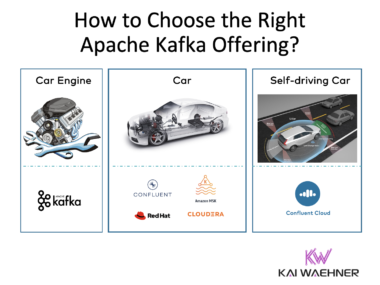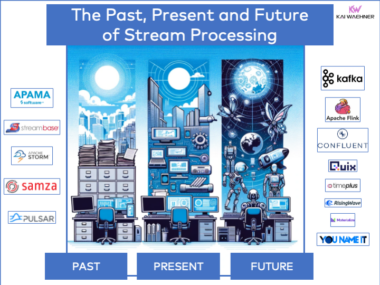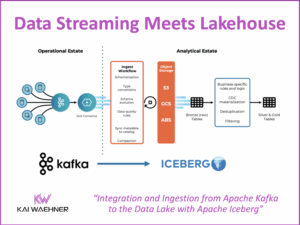Cloud Computing is the future – if you believe market forecasts from companies such as Gartner. I think so, too. But everybody should be aware that there won’t be one single cloud solution, but several clouds. These clouds will be hosted at different providers, use products and APIs from different vendors and use different concepts (IaaS, PaaS, SaaS). Thus, in the future you will have to integrate these clouds as you integrate applications today.
Apache Camel already offers Components for several Cloud Interfaces
Probably, it will take some months (or years) until enterprise projects need to integrate different clouds. Nevertheless, Apache Camel already offers several components for these tasks. You can integrate clouds using the same concepts as you use for integration of HTTP, FTP, JMS, JDBC, and all other Camel components. That is the biggest advantage of this integration framework, in my opinion.
IaaS Integration
Infrastructure as a Service (IaaS) offers a broad range of use cases. You can rent whole servers where you install whatever operating system and applications you want. You can integrate everything as you do it today with your common servers. IaaS also offers computing services (e.g. Amazon Elastic Compute Cloud – EC2) and storage services (e.g. Amazon Relational Database Service – RDS, SimpleDB or Simple Storage Service – S3). Camel already offers components to communicate directly with some of these IaaS services.
PaaS Integration
Platform as a Service (PaaS) offers a development container where you can deploy your application. Several restrictions exist, e.g. Google App Engine (GAE) has a white list of Java classes which are allowed. Further, no SQL database can be used at the moment. VMware Cloud Foundry is an open source example which offers MySQL support besides NoSQL databases. Camel already offers components to connect to GAE applications. The benefit of PaaS is that once you know the programming model, you can develop and deploy cloud applications very easily with automatic, elastic high availablity.
SaaS Integration
Software as a Service (PaaS) means using web applications in your web browser. Gmail is a very well-known, simple example. Salesforce is a better example for business applications. In fact, it is easy to use these SaaS applications. But if you want to integrate them, you still need a programming interface to each SaaS application which you want to integrate. For instance, Camel offers a component to send emails via Gmail. Some products already offer documentation how to integrate their SaaS application to Camel (here you can see an example from Hippo CMS: http://hst-salesforce.forge.onehippo.org/usingtasks.html).
The Number of Cloud Computing Solutions will increase a lot in the Future
Above, I mentioned some examples of IaaS, PaaS and SaaS alternatives. Of course, the number of products and solutions will increase a lot within the next months and years. Let’s list some more brands which are already available: Rackspace Cloud, CloudBees, Windows Azure, Elastic Bean Stalk, vCloud, AppForce, Hyper-V Cloud.
Apache Camel is future-proof for the Cloud Computing Era
As you can see, Apache Camel already offers several components for cloud computing offerings. Hopefully, many more components will be created for other coming cloud interfaces (BTW: I am sure this will happen). Different clouds will need to be integrated. Apache Camel has great potential to use the same concepts (routes, processors, test support, and so on) to integrate all these different cloud concepts and technologies. Nevertheless, you can still choose between „old style“ DSLs (using Java or Spring XML) and new modern JVM programming languages (using Groovy or Scala). In the next months, I will show more blogs which will show code examples to describe how to integrate the different cloud interfaces, starting with Amazon services (IaaS), Google App Engine (PaaS) and Salesforce (SaaS), as these components are already available…
Best regards,
Kai Wähner (Twitter: @KaiWaehner)







